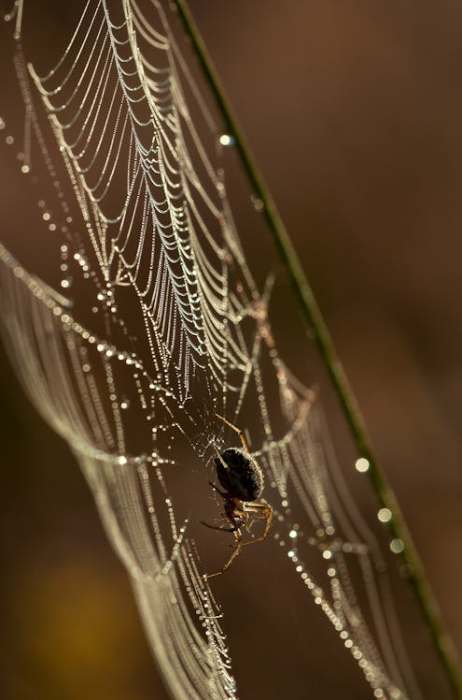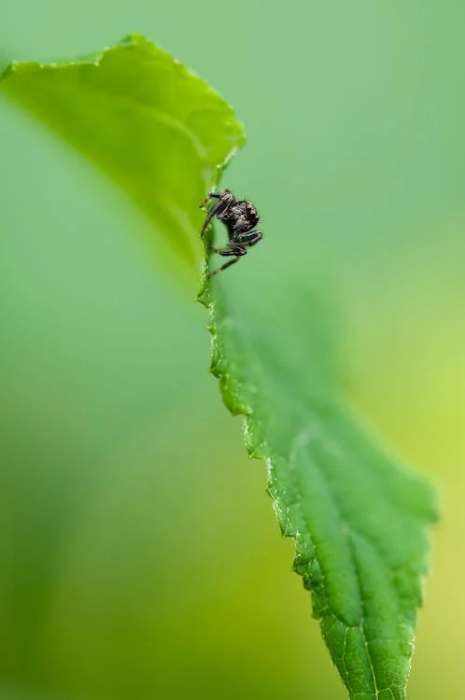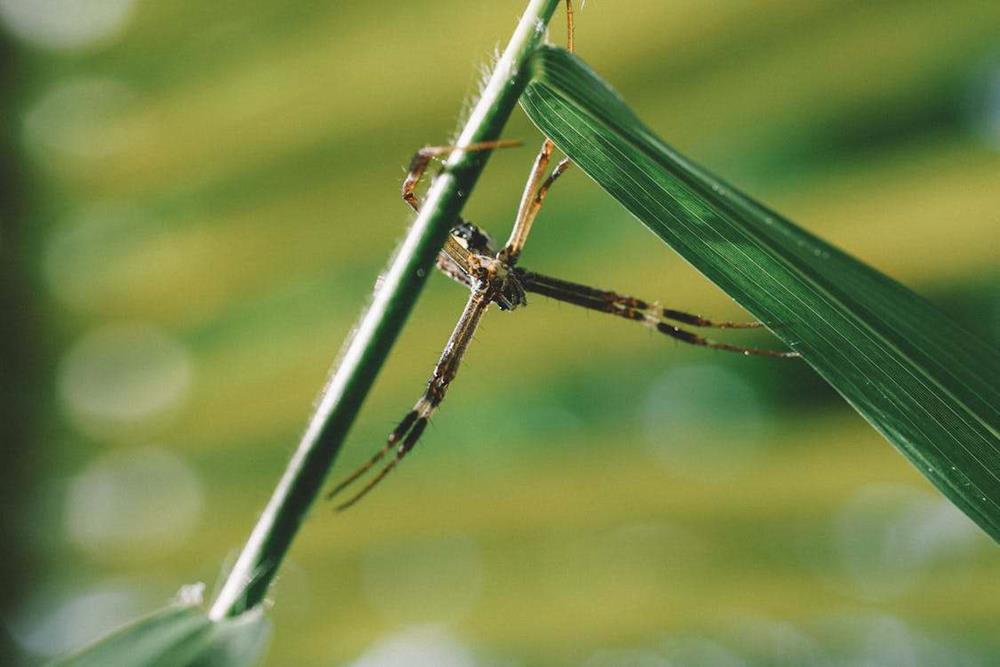The Scorpion-Tailed Spider (Arachnura), a creature as intriguing as its name suggests, grabs the spotlight in the world of arachnids. At first glance, its unique tail, reminiscent of a scorpion’s, sets it apart, sparking curiosity and wonder. This spider’s distinct appearance not only captivates the observer but also raises questions about the origins of its name. Understanding why animal species are named the way they are offers more than just a lesson in taxonomy; it opens a window into their behavior, ecological roles, and evolutionary history.
The naming process reflects a blend of scientific observation and human creativity, providing insights into the characteristics that make each species unique. As we examine the Scorpion-Tailed Spider, we’re not just learning about a name; we’re uncovering a fascinating story woven into the fabric of the natural world.
A Closer Look at the Scorpion-Tailed Spider
The Scorpion-Tailed Spider stands out in the arachnid world, not just for its behavior, but for its unique physical features. This spider’s appearance is a striking blend of the familiar and the unexpected, making it a subject of fascination and curiosity.
The Standout Feature: A Tail
What sets the Scorpion-Tailed Spider apart is its tail-like extension. This remarkable feature, resembling a scorpion’s tail, curves over the back of the spider, giving it a distinct silhouette against the backdrop of leaves and branches where it resides. Unlike a true scorpion, the spider’s tail isn’t used for defense or to deliver venom; instead, it serves a different purpose, related more to its mating rituals and possibly to deter predators by mimicking a more dangerous creature.
Beyond the Tail: Spider’s Appearance
Aside from its namesake tail, the Scorpion-Tailed Spider shares other characteristics with its spider kin. It possesses eight legs, each adept at navigating the intricate webs it weaves. Its body, compact and efficient, is designed for the dual purposes of hunting and survival. The coloration of these spiders often blends seamlessly with their surroundings, a natural camouflage against predators and a stealth advantage over their prey.
The Unique Behavior of the Scorpion-Tailed Spider
The Scorpion-Tailed Spider showcases behavior as unique as its appearance. This fascinating creature utilizes its tail in ways that intrigue and surprise observers, marking its distinct place in the arachnid family.
A Tail Unlike Any Other
In the wild, the Scorpion-Tailed Spider’s tail serves a purpose that goes beyond mere aesthetics. Unlike its namesake, the scorpion, which uses its tail as a weapon to inject venom into its prey, the spider’s tail is not venomous and serves a different function. It’s a tool of mimicry and perhaps communication within its species. The spider arches its tail over its body, mimicking the posture of a scorpion to deter predators or to attract mates. This act of mimicry is a clever survival strategy, leveraging the appearance of being more dangerous than it truly is.
Spider vs. Scorpion: A Behavioral Contrast
When comparing the behavior of the Scorpion-Tailed Spider to actual scorpions, the differences are as clear as their similarities are superficial. Scorpions are known for their aggressive hunting techniques, using their venomous tails as a primary means of subduing prey and defending against threats. In contrast, the Scorpion-Tailed Spider relies on its silk and speed. Its tail, while visually similar, plays no part in hunting or defense in a direct manner. Instead, this unique feature is more about deception and survival through the art of illusion.
Habitat and Distribution
Home of the Scorpion-Tailed Spider
The Scorpion-Tailed Spider, a fascinating member of the arachnid family, finds its home across various landscapes of Australia. This spider’s habitat choice showcases its remarkable adaptability and preference for specific environmental conditions.
A Preference for the Woods and Beyond
Predominantly, these spiders thrive in wooded areas, where dense foliage and tree barks provide ample hiding spots and hunting grounds. Their natural habitat includes rainforests, eucalypt forests, and even gardens, indicating a versatile adaptation to both wild and semi-urban environments. The dense vegetation not only offers protection from predators but also serves as an ideal setting for their intricate webs, essential for capturing prey.
Distribution Across Australia
The Scorpion-Tailed Spider is not confined to a single location but is distributed widely across the Australian continent. From the humid rainforests of Queensland to the cooler, temperate regions of Tasmania, these spiders have made themselves at home. Their presence across such varied climates speaks to their incredible ability to adapt and thrive in different environmental conditions.
Scientific Classification
Unveiling the Scorpion-Tailed Spider’s Place in Nature
The Scorpion-Tailed Spider, a creature that captures the imagination with its unique appearance, belongs to a fascinating lineage within the arachnid family. Its scientific classification sheds light on both its ancestry and its distinct place in the natural world.
A Spot in the Arachnid Family
Arachnids, a group known for its spiders, scorpions, mites, and ticks, welcome the Scorpion-Tailed Spider into their diverse family. This spider falls under the order Araneae, which encompasses all true spiders. Within this order, it occupies a niche that highlights its unique evolutionary path, marked by the scorpion-like tail that gives it its name.
The Taxonomic Breakdown
The specific classification of the Scorpion-Tailed Spider begins with its placement in the Araneae order, signaling its true spider status. From there, it’s classified further into a family that showcases its unique characteristics, such as the tail-like appendage. This feature not only distinguishes it from other spiders but also illustrates the evolutionary creativity within the arachnid family. The spider’s genus and species name further identify its specific traits and behaviors, distinguishing it from its close relatives.
Fitting Within the Arachnid Tapestry
The Scorpion-Tailed Spider’s exceptional features, particularly its tail, underscore its unique evolutionary development. This tail, while reminiscent of scorpions, does not serve the same purpose as it does in its namesake. Instead, it’s a result of divergent evolution within spiders, showcasing the variety of adaptations that can arise from similar starting points. The spider’s place in the arachnid family highlights the diversity and adaptability of these creatures, proving that even among the well-trodden paths of evolution, nature can still surprise us with novel adaptations.
Human Perception and Study
Discovering the Scorpion-Tailed Spider
The journey into understanding the Scorpion-Tailed Spider stretches back over centuries, as early naturalists first documented its existence with a mix of fascination and curiosity. Initially, its distinct tail sparked myths and misconceptions, leading to a rich tapestry of stories and speculations. Over time, as scientific methods and tools evolved, so did our understanding of this unique creature, moving from folklore to the realm of entomology.
The Path of Study
From the first sketches in dusty journals to the latest digital imaging techniques, the study of the Scorpion-Tailed Spider has come a long way. Researchers have shifted from merely cataloging its appearance to delving into its behavior, ecology, and genetic makeup. This spider has become a subject of interest not only for its peculiar looks but also for what it can teach us about adaptation and survival strategies in the natural world.
Current Insights and Revelations
Recent research has unveiled fascinating aspects of the Scorpion-Tailed Spider’s life. For instance, its tail, once thought to be purely a defensive tool, plays a crucial role in its mating rituals. Scientists have also discovered the spider’s remarkable ability to mimic other, more dangerous arachnids, a survival strategy that keeps predators at bay. Additionally, studies on its web-building techniques have provided insights into the materials and patterns unique to this species, adding another layer of understanding to its complex existence.
Conclusion
From its unique tail that mimics a scorpion’s to its wide distribution across Australia, this spider showcases the incredible diversity of life. Understanding unique species like the Scorpion-Tailed Spider is crucial for several reasons. It not only enriches our knowledge of the natural world but also highlights the importance of biodiversity and the intricate relationships within ecosystems. Each species, no matter how small or seemingly obscure, plays a role in the tapestry of life, contributing to the health and stability of their habitats. The study of such unique creatures also sparks curiosity and wonder, driving scientific inquiry and fostering a deeper appreciation for the natural world around us.




